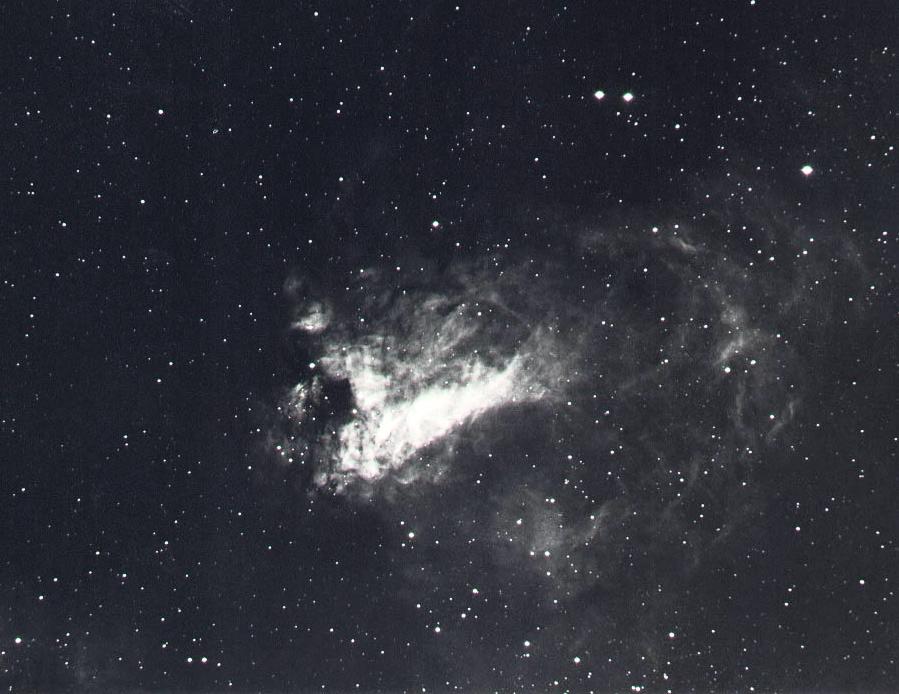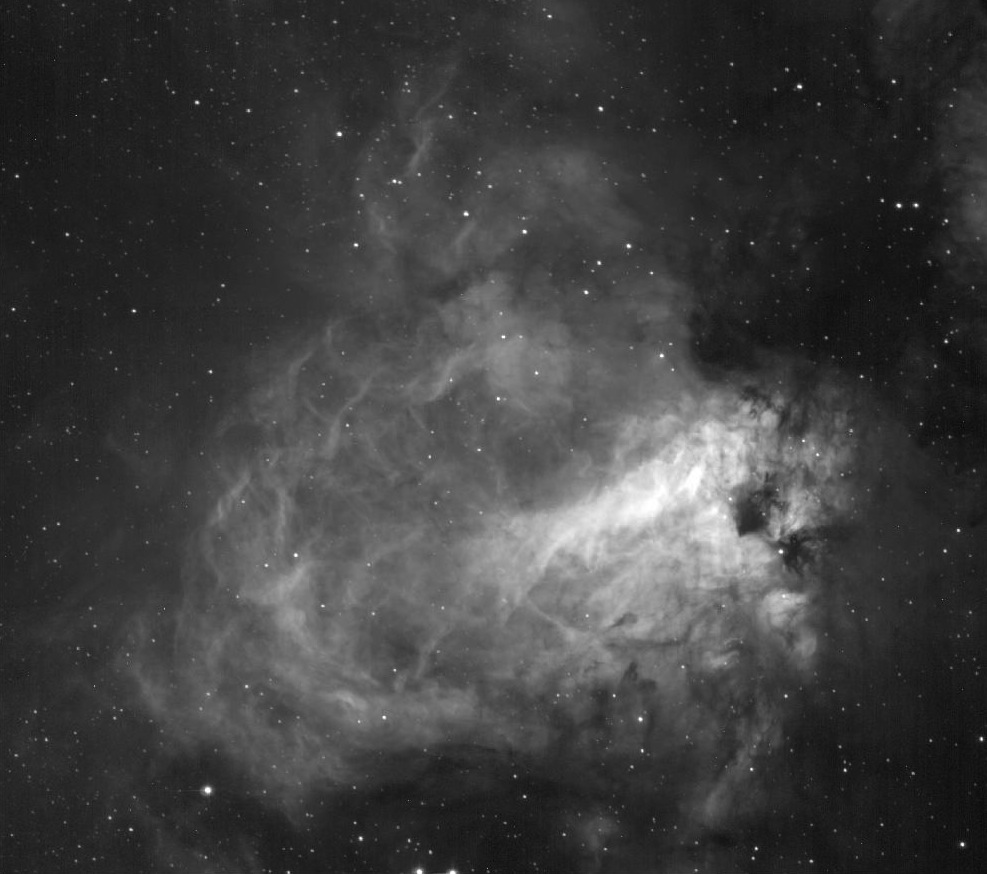

The gaseous nebula (H II region) Messier 17 (NGC 6613) in northern Sagittarius, shown from a 30-second red-light exposure (through clouds) with a Tektronix 2048x2048 CCD at the prime focus of the 4-meter Mayall telescope of Kitt Peak National Observatory. North is at the top and east to the left, for direct comparison with a chart or eyepiece view. The image has been block-averaged to 512x512 for this presentation, which uses a logarithmic intensity transformation to preserve information across a wide dynamic range. The field is 14.3 arcminutes square, showing only the central quarter or so of the vast extent of M17. More of it can be seen in this red-light photograph taken with the 0.9-meter Crossley telescope at Lick Observatory.

M17 is notable for being part of an enormous cloud of molecular gas, the raw material of star formation. Only the surface of a "blister" shines in visible light, where it is ionized by the ultraviolet light of massive, young stars, and where the light is not blocked by the surrounding dust. Especially prominent dust clouds appear at the western (right) edge of this picture, but the whole area is loaded with dust and molecular gas that are not so prominent visually.
This Hα mosaic, taken with the 1m telescope of the SARA Observatory on Kitt Peak, spans 0.7 degree on a side, givng a more complete view of the bright nebula relative to the surrounding dark cloud and filaments arcing around it.

For a wider context, this 2-field red-light mosaic taken with the University of Alabama Crimson Dragon wide-field imaging system shows both M17 (at the bottom) and M16.

Last changes: 9/2018 © 2001-2018